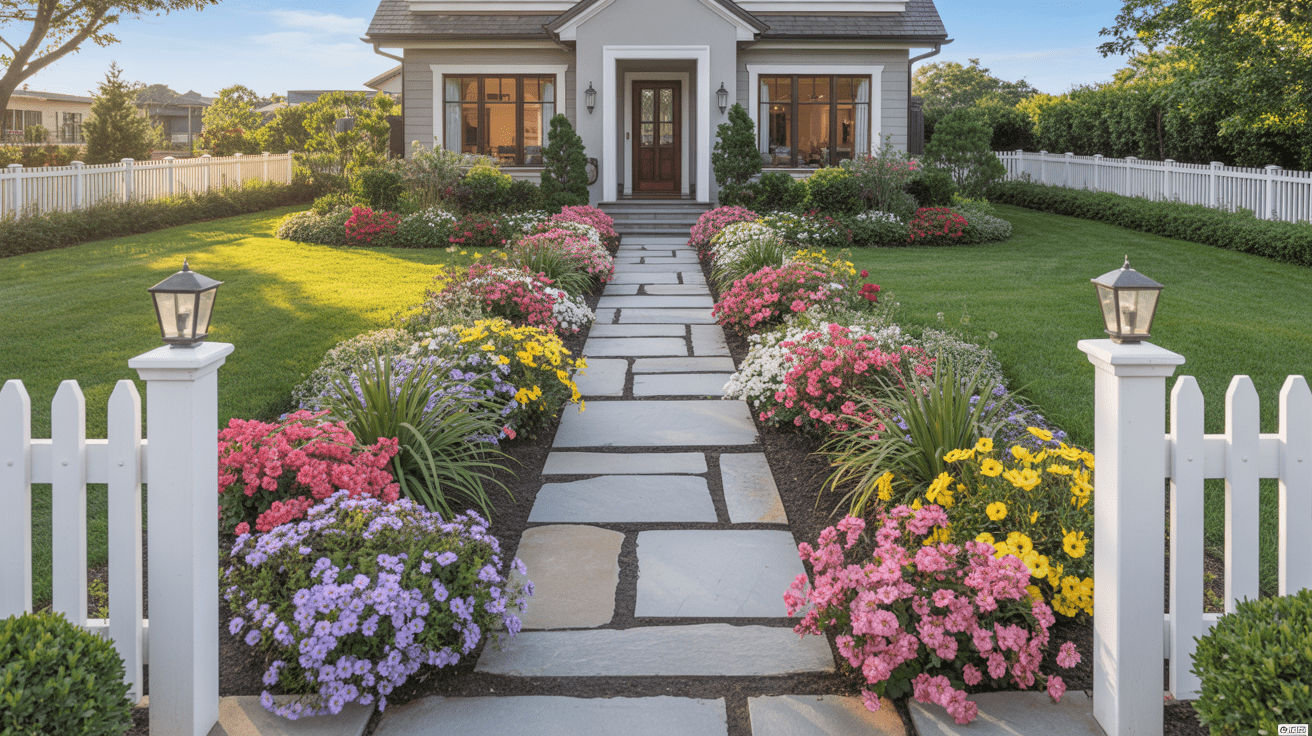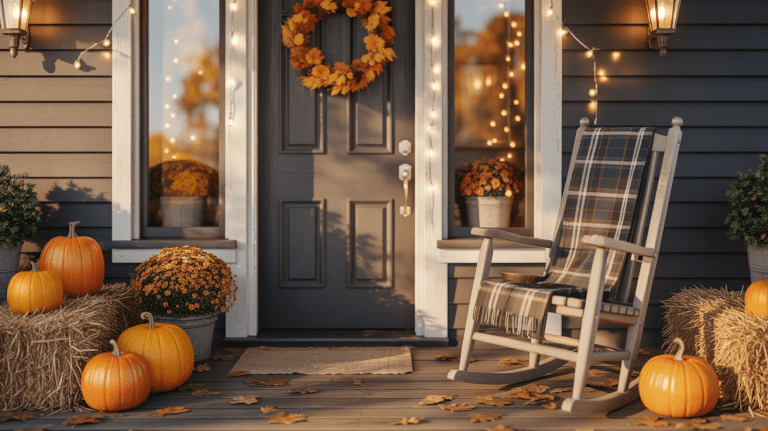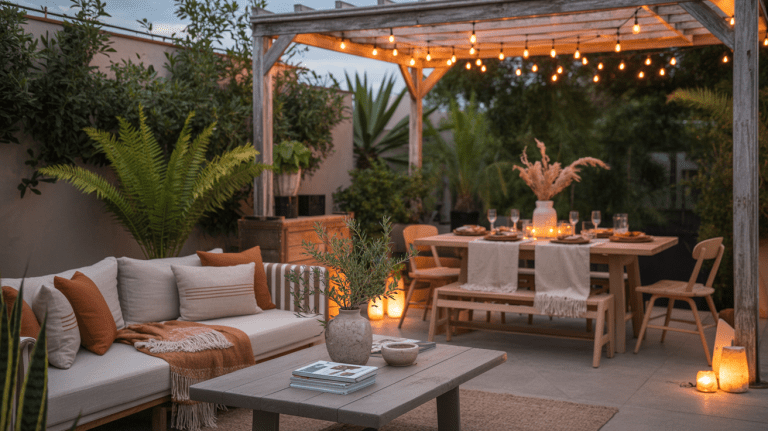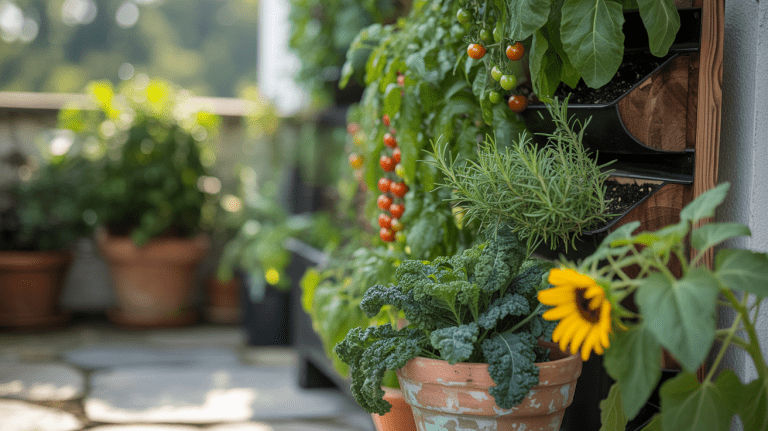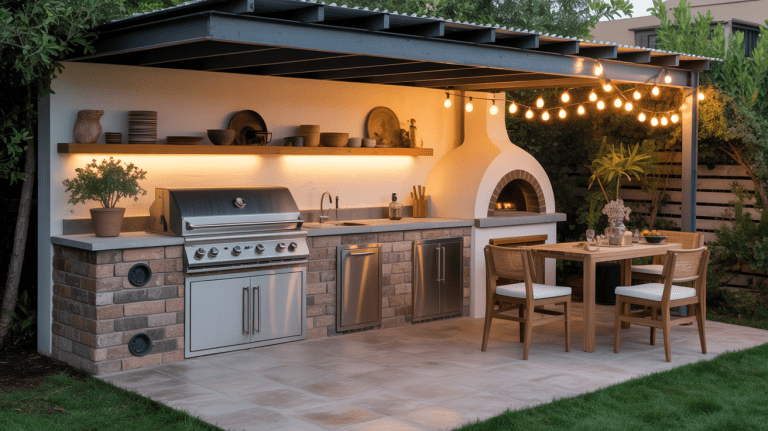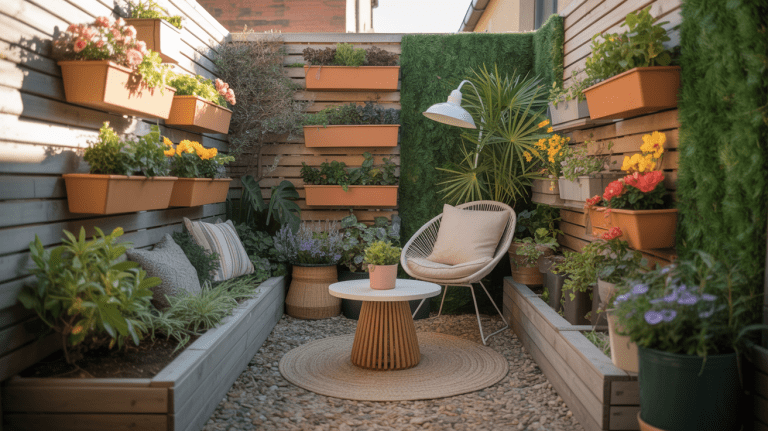15 Front Yard Landscape Ideas to Transform Your Home’s Curb Appeal
Your front yard serves as the first impression visitors have of your home, making it a crucial space for creating curb appeal and expressing personal style. A well-designed front landscape can increase property value while providing an inviting entrance that reflects the homeowner’s taste and attention to detail.
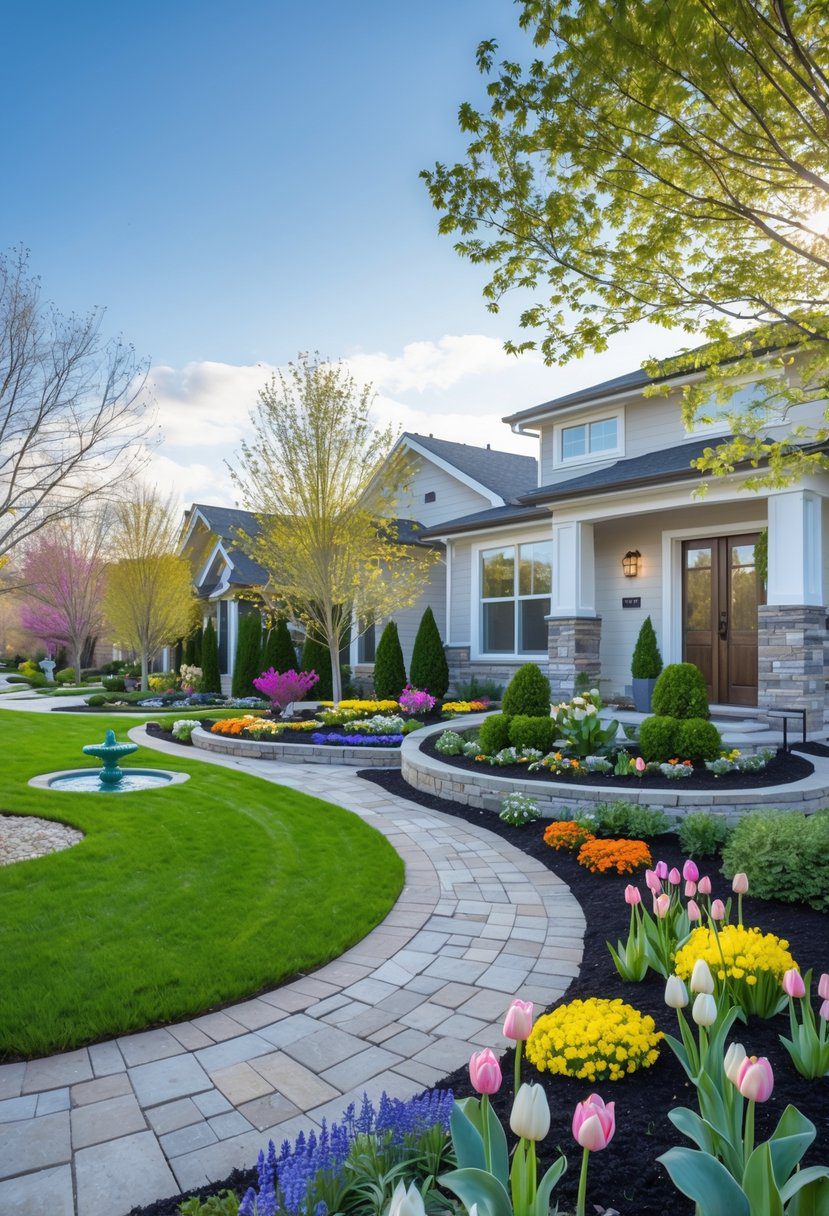
Transforming a front yard doesn’t require expensive renovations or extensive gardening experience, as simple changes like adding structured pathways, colorful plantings, and strategic lighting can dramatically improve any outdoor space. From incorporating native plants and ornamental grasses to installing water features and creating defined seating areas, homeowners have numerous options to enhance their front yard’s appearance. These front yard landscaping ideas can work within various budgets and maintenance preferences, whether someone prefers modern minimalist designs or lush cottage-style gardens.
1. Create a symmetrical pathway with stone pavers to enhance entry appeal

A symmetrical stone paver pathway creates instant visual balance at your home’s entrance. This design draws the eye directly to your front door while adding structure to your landscape.
Stone pavers offer durability and timeless appeal that complements most architectural styles. The symmetrical layout provides elegant pathways that enhance curb appeal.
2. Plant foundation shrubs like boxwood for structured greenery

Foundation plants like boxwood create clean lines around your home’s base. These evergreen shrubs maintain their shape year-round.
Boxwood shrubs work well in USDA zones 5 to 9. They handle pruning easily and stay compact near foundations.
3. Incorporate colorful perennial flower beds for year-round color
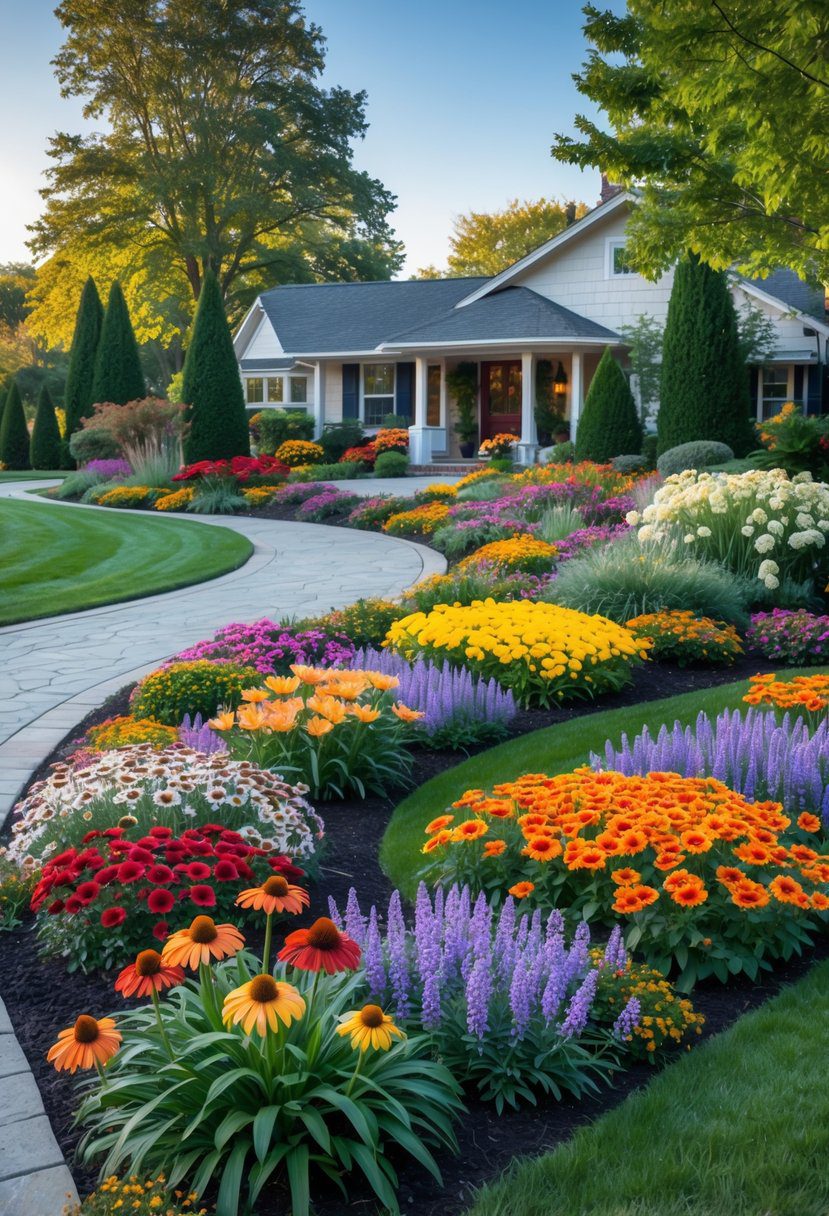
Perennial flower beds return each year without replanting. These plants provide consistent color and structure throughout seasons.
Homeowners can create low-maintenance flower beds that bloom reliably. Perennials offer sustainable gardening solutions for busy families.
4. Add outdoor lighting along walkways and garden beds
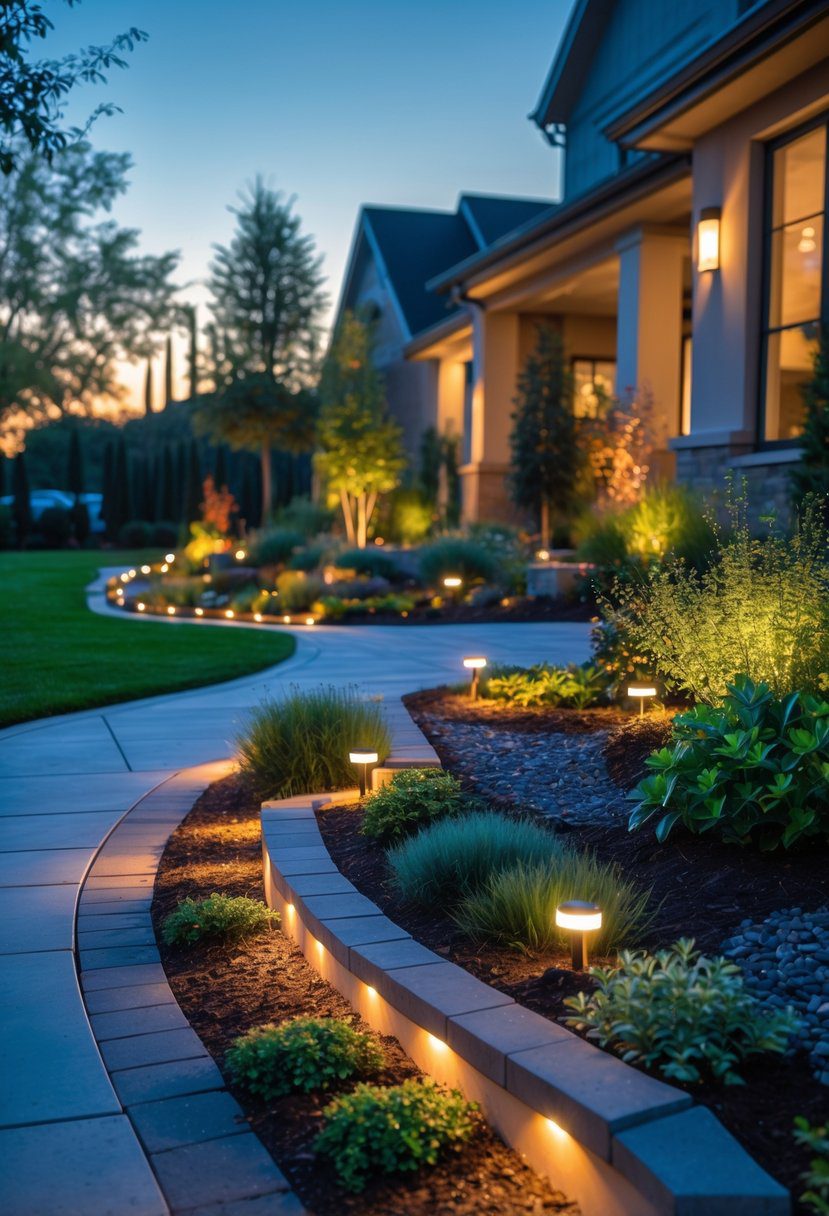
Outdoor lighting transforms front yards into welcoming spaces. Path lighting improves safety while adding visual appeal.
Solar-powered stakes offer simple installation. Hard-wired fixtures provide consistent brightness for garden pathways.
5. Install a modern, low-maintenance rock garden
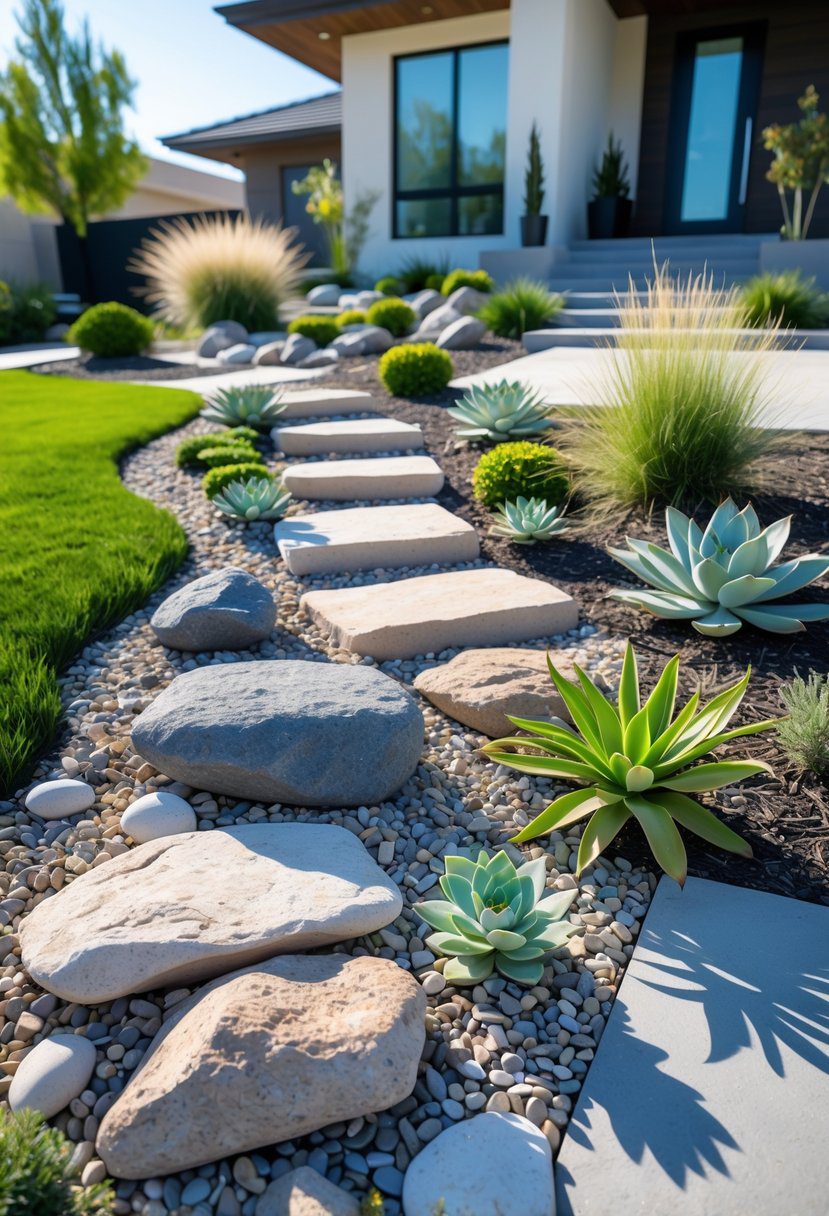
Rock gardens create stunning visual appeal with minimal upkeep. They work well in difficult growing areas where grass struggles.
Modern rock garden designs blend sleek stone arrangements with drought-tolerant plants. This combination reduces watering needs significantly.
6. Use ornamental grasses for texture and movement
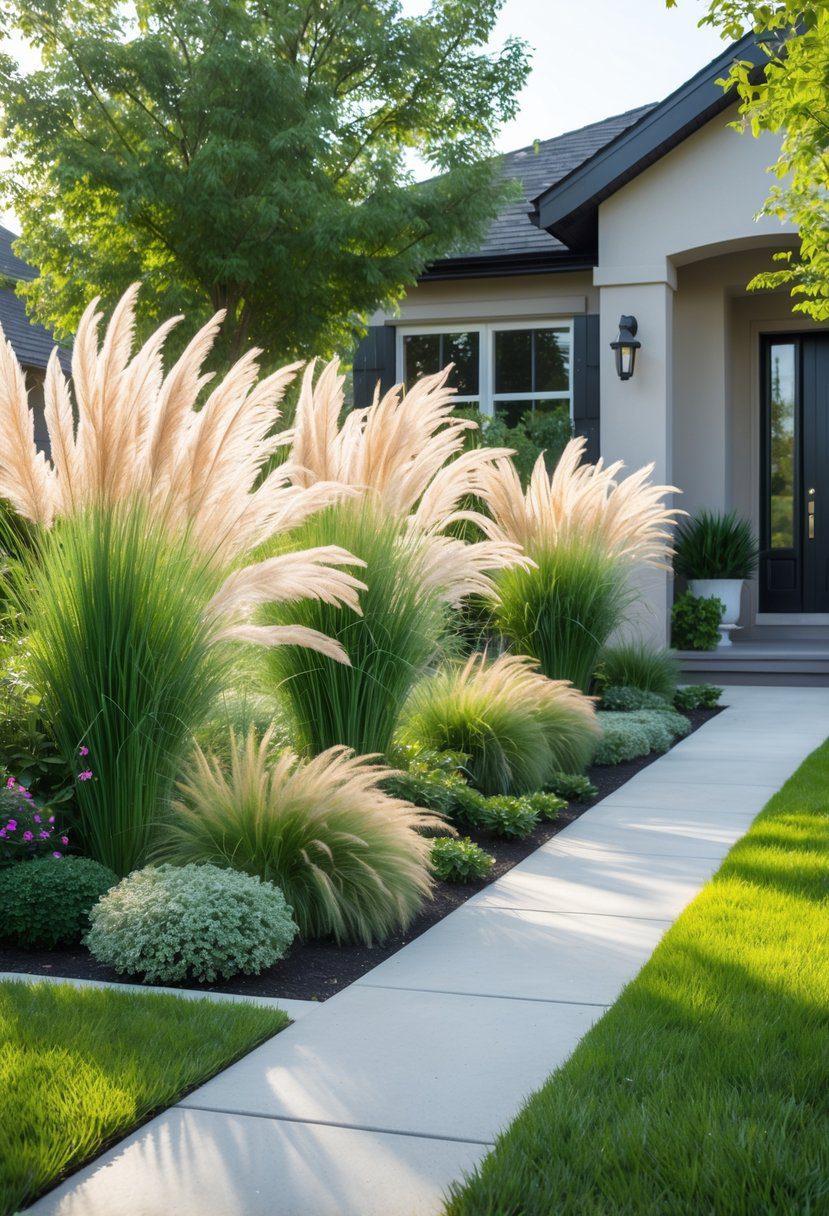
Ornamental grasses bring natural movement to any front yard. These plants sway gently in the breeze and create visual interest throughout the seasons.
Ornamental grasses add texture and movement while requiring minimal maintenance. They work well along walkways or as border plants.
7. Build a raised garden bed for herbs or seasonal flowers
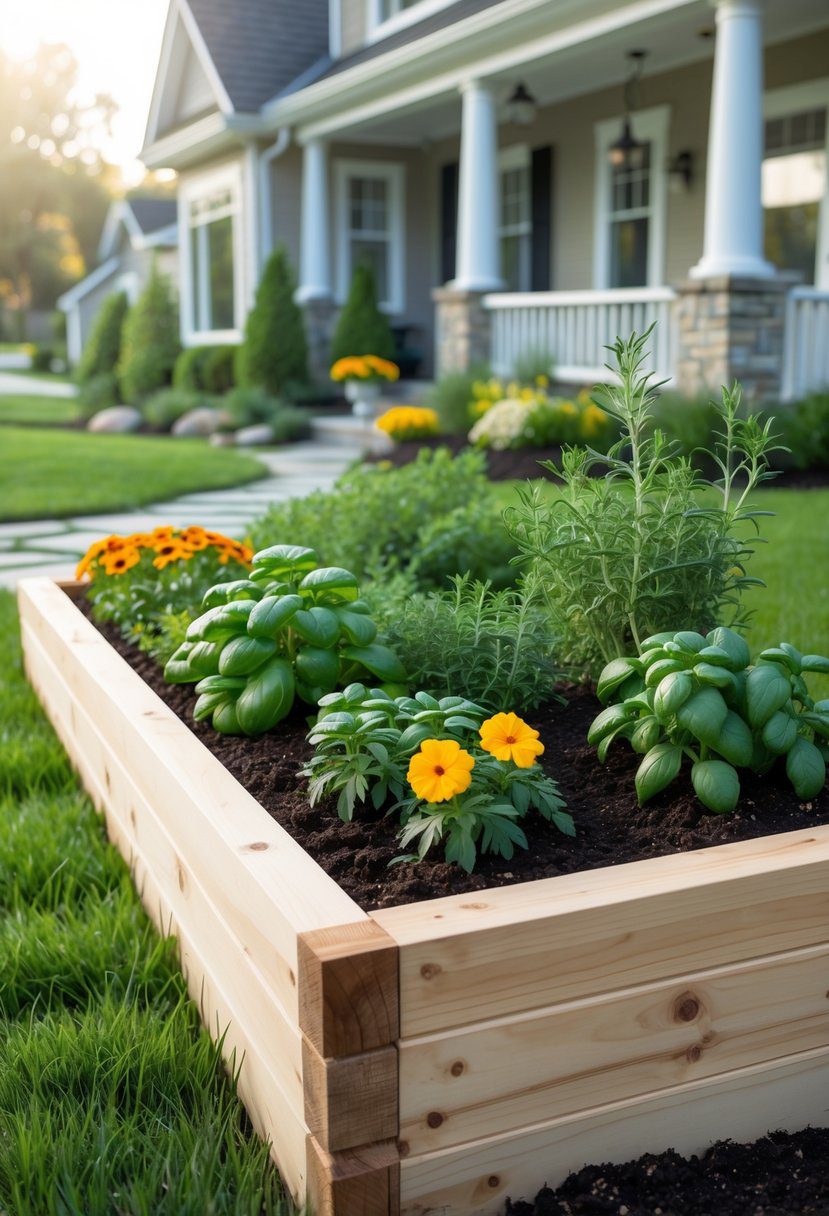
Raised flower beds add structure and depth to front yards. They provide better drainage and soil control for healthier plants.
Homeowners can use wood, stone, or brick materials. These beds work well for growing herbs, flowers, and vegetables together.
8. Create a focal point with a water feature like a small fountain

A small fountain instantly transforms any front yard into an eye-catching space. Water features make appealing focal points that pull the landscape together.
Homeowners can choose from bubbling stone fountains to simple barrel designs. These features work well in circular garden beds surrounded by colorful plants.
9. Integrate native plants for sustainability and low water use
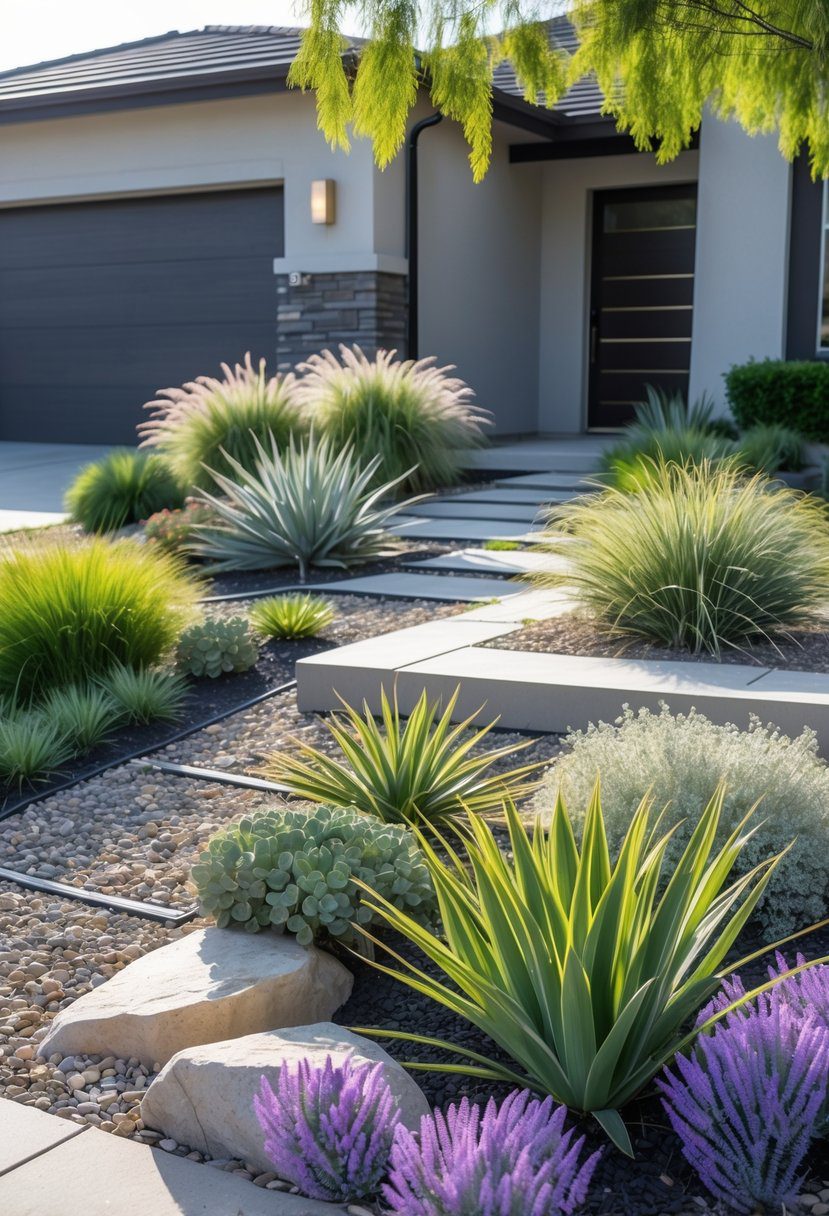
Native plants naturally thrive in local climates without extra watering. They reduce water consumption and maintenance needs significantly.
These plants support local wildlife and ecosystems while requiring fewer pesticides. Homeowners can cut water bills by 50% using native species.
10. Add a bench or seating area as an inviting feature
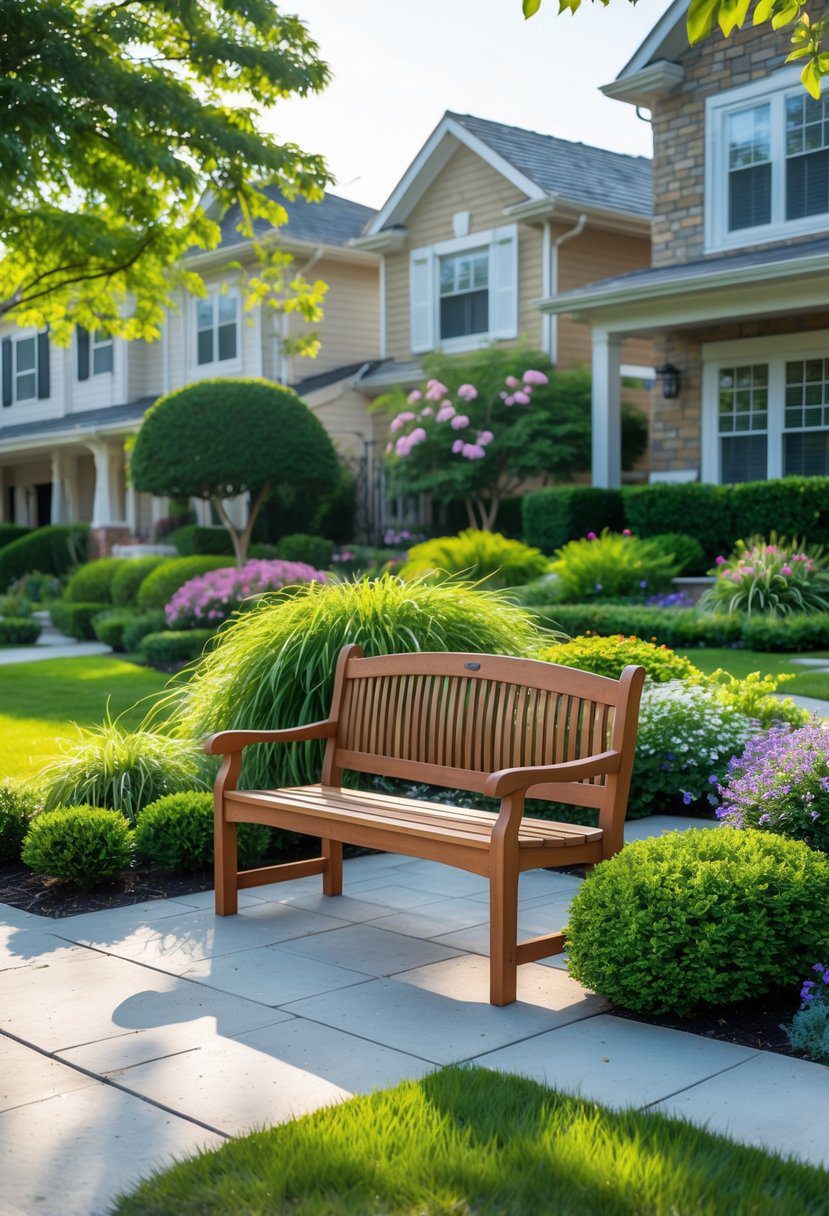
A simple bench creates a welcoming spot in any front yard. Front yard seating areas enhance curb appeal while providing functional outdoor space.
Homeowners can choose from wooden benches, stone seating, or modern metal designs. The right bench complements existing landscape features and architectural style.
11. Use mulch and edging to define planting areas neatly
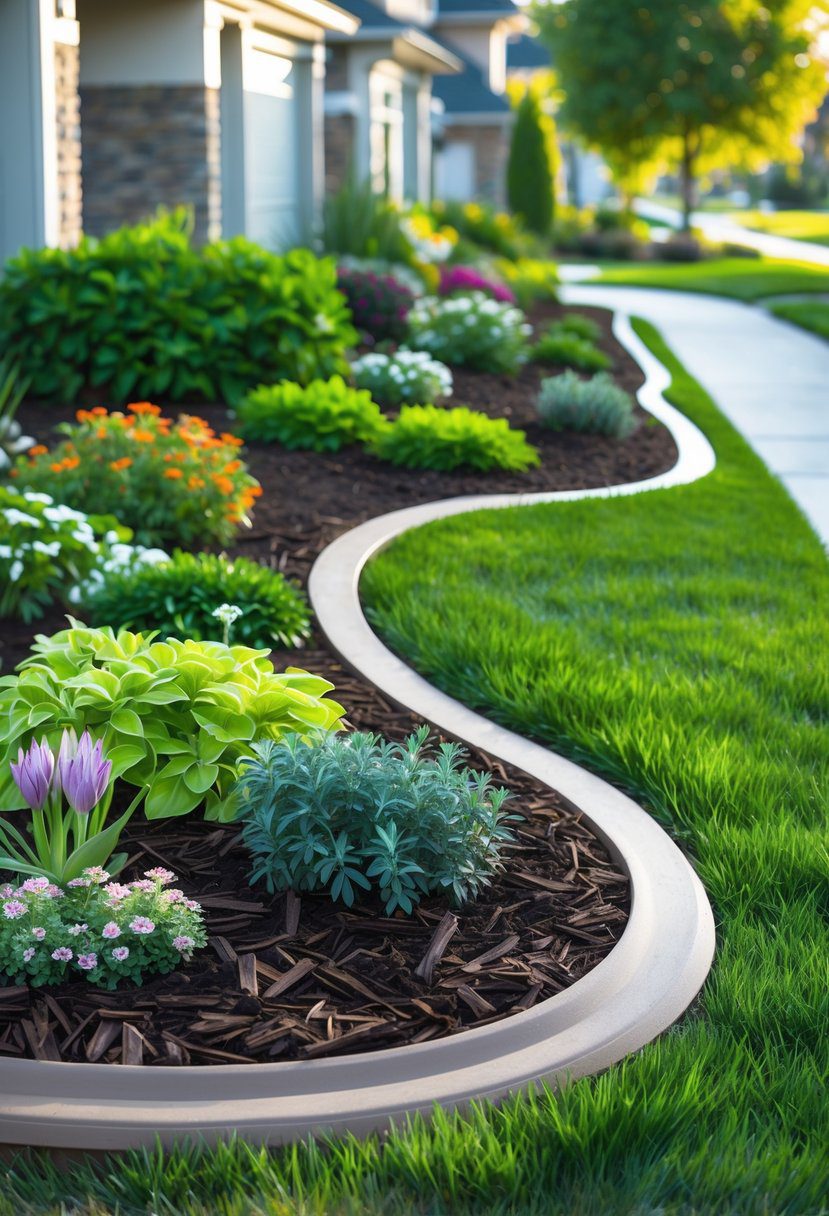
Mulch edging creates defined barriers between lawn and garden beds. This combination prevents soil erosion while keeping mulch in place.
Natural stone edging brings durability to any garden design. The materials come in various shapes and colors for personalization.
12. Incorporate decorative planters near the front door
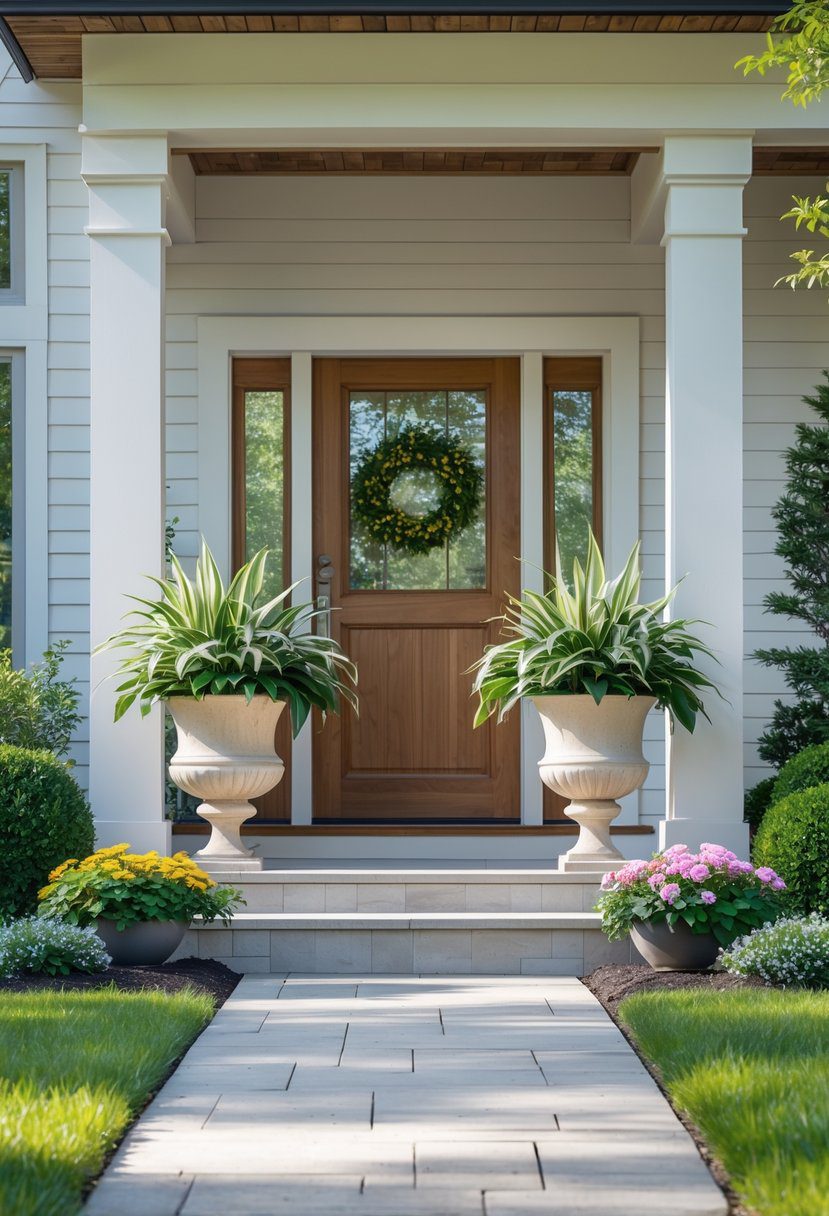
Decorative planters create instant curb appeal around entrance areas. Large containers filled with seasonal flowers or evergreen plants frame doorways beautifully.
Front door planters add color and welcome guests with natural beauty.
13. Design a curved pathway for visual interest and flow
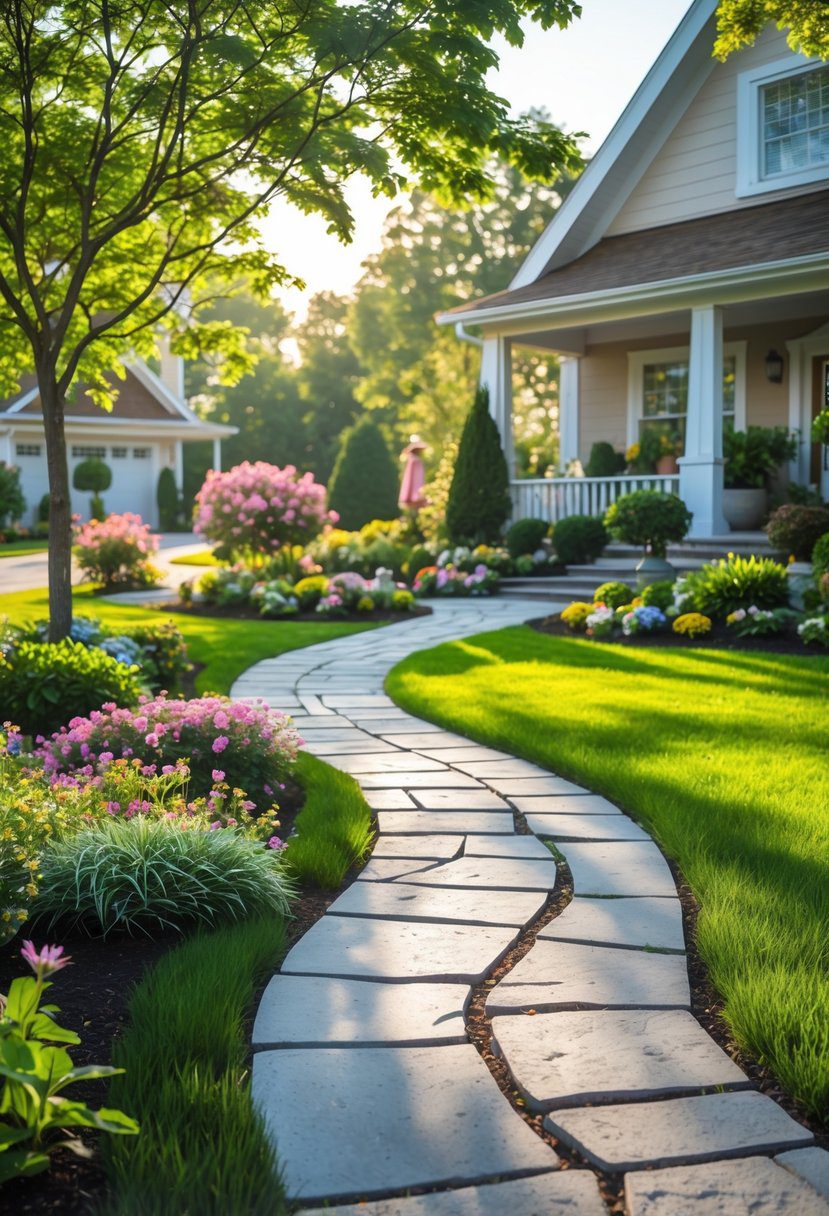
A curved gravel path introduces elegance and whimsy to any front yard. The gentle bends guide visitors naturally toward the entrance.
Curved pathways enhance the flow of space within yard layouts. They create visual interest while breaking away from traditional straight designs.
14. Plant fragrant flowers such as lavender or gardenias
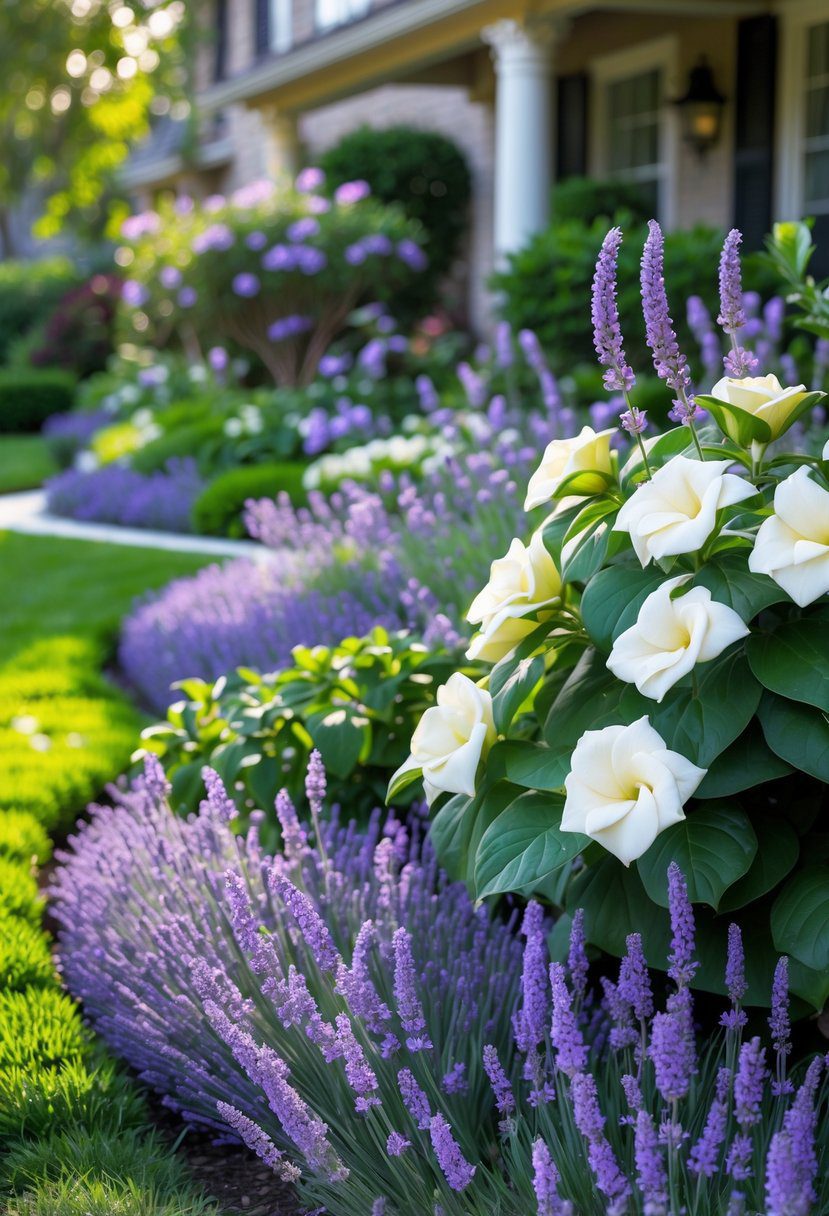
Fragrant plants can enhance your home’s curb appeal significantly. Lavender offers purple blooms and silver foliage that attracts pollinators.
Gardenias provide white flowers with intense fragrance. Both plants create welcoming outdoor spaces with natural scents.
15. Mix evergreens with flowering shrubs for balanced structure
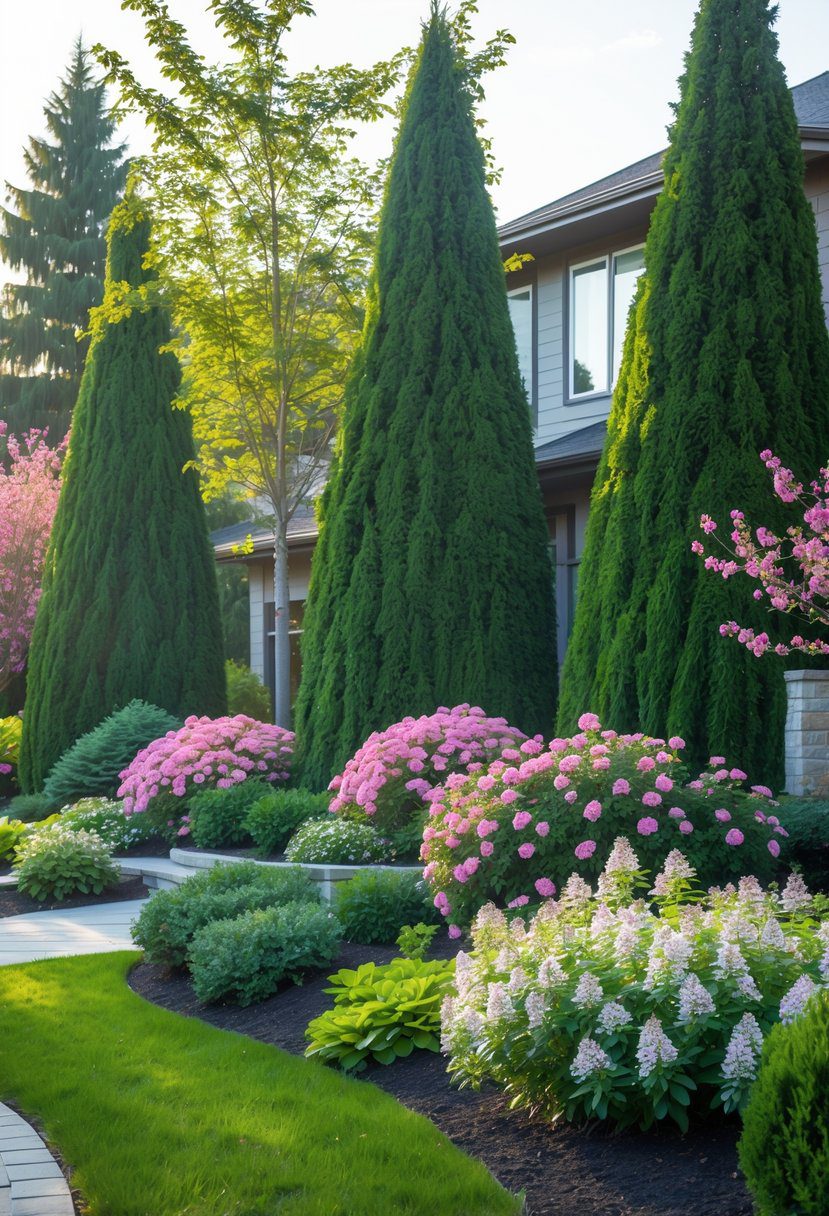
Mixing evergreens with flowering shrubs creates year-round interest in front yards. Evergreens provide steady structure while flowering plants add seasonal color.
This combination maintains garden balance through all seasons. Evergreens anchor the design when other plants go dormant.
Frequently Asked Questions
Homeowners often have specific questions about creating beautiful front yard landscapes that match their needs and budget. These common concerns cover maintenance requirements, space limitations, sun exposure, design styles, and practical implementation.
What are some low maintenance landscaping ideas for the front of a house?
Rock gardens with decorative gravel require minimal watering and weeding. Homeowners can plant drought-tolerant succulents and ornamental grasses between the stones.
Foundation shrubs like boxwood provide structure without frequent pruning. These evergreen plants maintain their shape naturally and only need trimming once or twice per year.
Ground cover plants replace traditional grass in problem areas. Creeping thyme and moss phlox spread naturally and eliminate the need for regular mowing.
Xeriscaping techniques use native plants that thrive in local climate conditions. These plants need less water and fertilizer than non-native species.
How can I design a front yard landscape suitable for small areas?
Vertical gardens maximize planting space by using walls and fences. Homeowners can install wall-mounted planters or train climbing vines on trellises.
Symmetrical pathways create the illusion of more space. Stone pavers arranged in straight lines draw the eye forward and make narrow yards appear wider.
Layered plantings add depth without taking up extra ground space. Tall plants go in back, medium shrubs in middle, and low flowers in front.
Container gardens allow flexibility in small spaces. Large pots with seasonal flowers can be moved and rearranged as needed.
What landscaping options work well for a front yard with full sun exposure?
Colorful perennial flower beds thrive in sunny locations. Black-eyed Susans, purple coneflowers, and daylilies bloom repeatedly throughout the growing season.
Ornamental grasses handle intense sunlight and heat. Fountain grass and blue fescue add texture and movement while requiring minimal care.
Drought-resistant shrubs like lavender and rosemary provide fragrance and color. These Mediterranean plants actually prefer hot, dry conditions.
Modern rock gardens work well in sunny areas. The stones absorb heat during the day and release it slowly at night.
Where can I find images of front yards with low maintenance landscaping?
Online landscaping websites showcase stunning front yard designs with detailed photos. These galleries often include plant lists and maintenance tips.
Home improvement magazines feature seasonal front yard makeovers. Many publish both print and digital versions with searchable photo archives.
Social media platforms like Pinterest and Instagram contain thousands of landscaping photos. Users can search specific hashtags like #frontyard or #lowmaintenance.
Local garden centers often display example photos of their recommended plant combinations. Staff members can provide region-specific advice based on these examples.
Can you suggest modern landscaping designs for front yards?
Clean geometric lines define modern landscape design. Rectangular planting beds with sharp edges create a contemporary look.
Minimalist plant palettes use fewer varieties for greater impact. Three to five different plants repeated throughout the design create visual unity.
Outdoor lighting along walkways adds modern functionality. LED strip lights under railings or spotlights on architectural features enhance nighttime appeal.
Modern materials like steel planters and concrete pavers complement contemporary homes. These materials age well and require minimal maintenance.
What are some simple yet effective landscaping ideas for the front of a house?
Foundation plantings frame the house entrance with evergreen shrubs. These basic plantings provide year-round color and structure.
Mulched flower beds reduce weeding time and retain soil moisture. A three-inch layer of organic mulch around plants suppresses weeds naturally.
Simple walkway improvements make immediate visual impact. Pressure washing existing concrete or adding border plants costs little but creates big changes.
Seasonal flower pots near the front door add instant color. Homeowners can swap out plants four times per year for continuous blooms.

